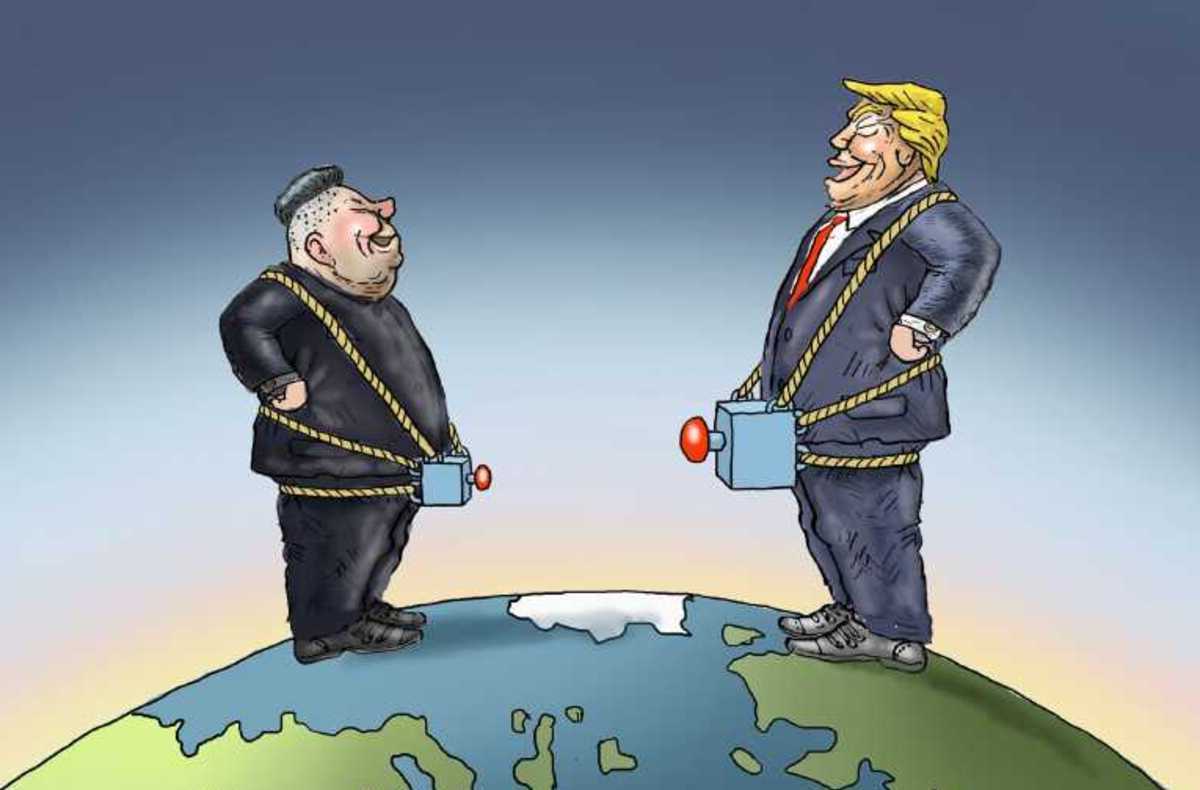Unveiling Hidden Messages in History’s Top 10 Influential Political Cartoons

Political cartoons have long been a powerful tool for commentary, using humor and satire to convey complex ideas. These artistic expressions often capture the essence of significant historical moments, offering insights into the political climate of their time. From the biting wit of Thomas Nast's depictions of Boss Tweed to the poignant imagery in Dr. Seuss's wartime illustrations, these cartoons have shaped public opinion and influenced political discourse. Each drawing tells a story, revealing hidden messages that resonate with audiences across generations. By examining history's top 10 influential political cartoons, we can better understand the social and political landscapes that inspired them. These visual commentaries not only reflect the past but also provide a lens through which we can view current events. As we delve into these iconic works, we uncover the enduring power of art in shaping political narratives and sparking meaningful conversations.
Political Cartoons: More Than Just Art
Political cartoons have been a powerful tool for commentary and satire throughout history. These illustrations often convey complex ideas with humor and wit, making them accessible to a wide audience. Let's explore some of the most influential political cartoons that have left a mark on history.
The Power of Imagery in Political Cartoons
Images can speak louder than words, especially in the realm of politics. Political cartoons use symbolism and caricature to highlight issues and provoke thought. Here are some of the most impactful cartoons that have shaped public opinion.
"Join, or Die" by Benjamin Franklin
Created in 1754, this cartoon depicted a snake cut into pieces, each representing a colony. It urged unity among the American colonies against British rule, becoming a symbol of colonial freedom."The Plumb-Pudding in Danger" by James Gillray
This 1805 cartoon showed British Prime Minister William Pitt and Napoleon carving up the world as a plum pudding. It highlighted the geopolitical tensions of the time and the rivalry between Britain and France."The American River Ganges" by Thomas Nast
Published in 1871, this cartoon criticized the influence of the Catholic Church in American politics. Nast depicted bishops as crocodiles attacking public schools, sparking debate on church and state separation.
Cartoons That Changed Perceptions
Political cartoons have the power to change how people view leaders and policies. Through clever illustrations, they can sway public opinion and bring about change. Let's look at some cartoons that did just that.
"The Yellow Kid" by Richard F. Outcault
Debuting in 1895, this cartoon character became a symbol of the sensationalist "yellow journalism" of the era. It influenced public perception of media and its role in shaping news."Remember the Maine" by Louis Dalrymple
This 1898 cartoon rallied American support for the Spanish-American War by depicting the sinking of the USS Maine. It played a significant role in stirring public sentiment towards war."The Big Stick in the Caribbean Sea" by William Allen Rogers
Published in 1904, this cartoon illustrated President Theodore Roosevelt's foreign policy. It depicted Roosevelt wielding a big stick, symbolizing his approach to international diplomacy.
Cartoons as Catalysts for Social Change
Some political cartoons have gone beyond commentary, becoming catalysts for social change. By highlighting injustices and societal issues, they have inspired movements and reforms.
"The Shame of the Cities" by Lincoln Steffens
This 1902 cartoon series exposed corruption in American cities, leading to public outcry and demands for reform. It played a key role in the Progressive Era's push for change."I Want You for U.S. Army" by James Montgomery Flagg
Created in 1917, this iconic Uncle Sam poster became a powerful recruitment tool during World War I. It encouraged enlistment and patriotism, becoming a lasting symbol of American identity."Rosie the Riveter" by Norman Rockwell
Published in 1943, this cartoon celebrated women's contributions to the workforce during World War II. It empowered women and became an enduring symbol of female strength and independence.
Cartoons That Sparked Controversy
Not all political cartoons are met with applause. Some have sparked controversy and debate, challenging societal norms and provoking strong reactions.
- "Muhammad Cartoons" by Jyllands-Posten
Published in 2005, these cartoons depicting the Prophet Muhammad led to global protests and debates about freedom of speech and religious sensitivity. They highlighted the tension between expression and respect for beliefs.
Reflecting on History's Visual Commentary
Political cartoons have long been a powerful tool for social commentary and political critique. These illustrations, often filled with satire and symbolism, offer insights into the political climate and public sentiment of their time. By examining history's top 10 influential cartoons, we gain a deeper understanding of how artists have used their craft to influence public opinion and spark change. These cartoons not only reflect the issues of their era but also highlight the enduring power of visual storytelling. As we continue to face new challenges, these historical pieces remind us of the importance of critical thinking and the role of art in shaping discourse. Whether addressing war, social justice, or political corruption, political cartoons remain a vital part of our cultural heritage, encouraging us to question, reflect, and engage with the world around us.

